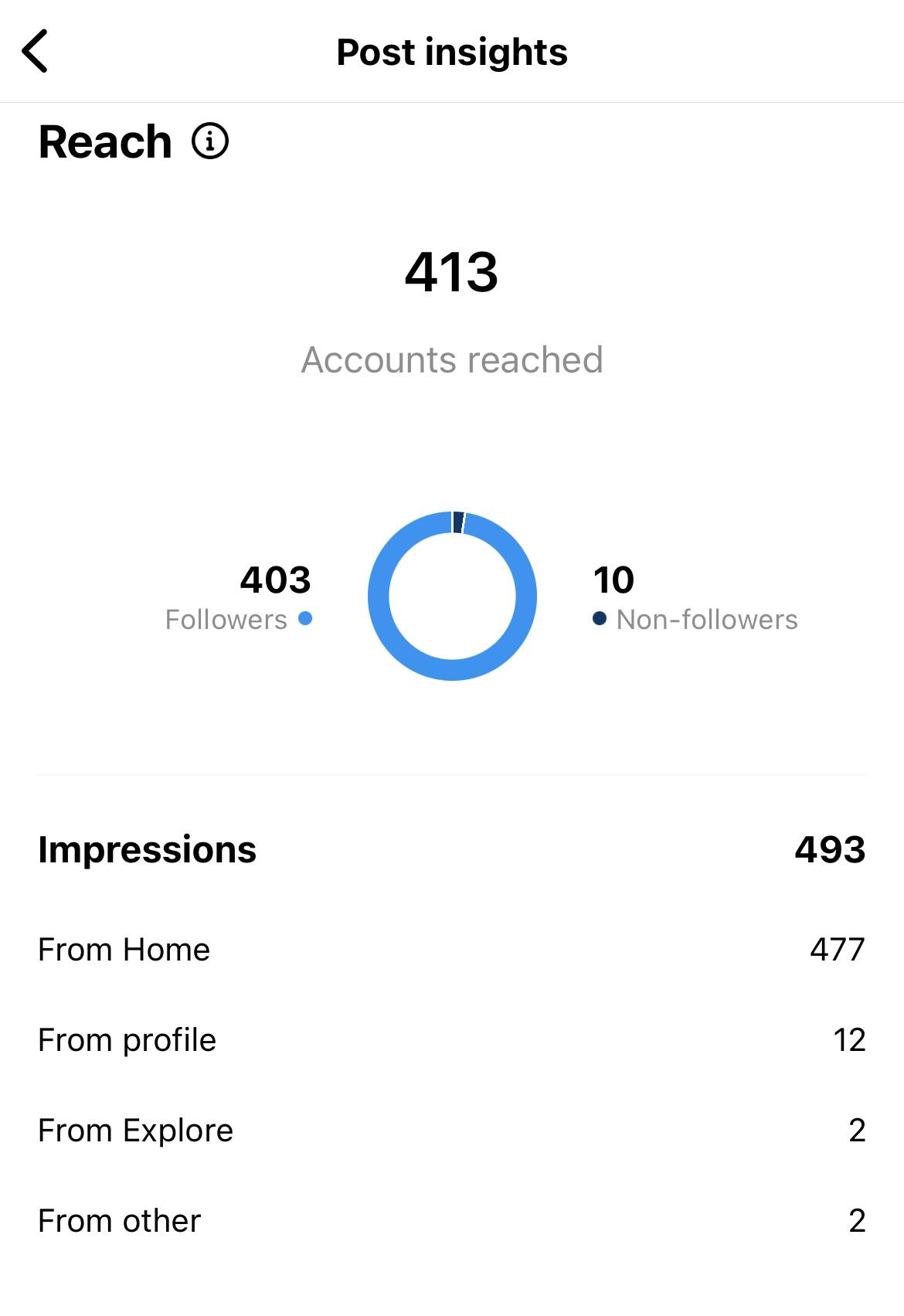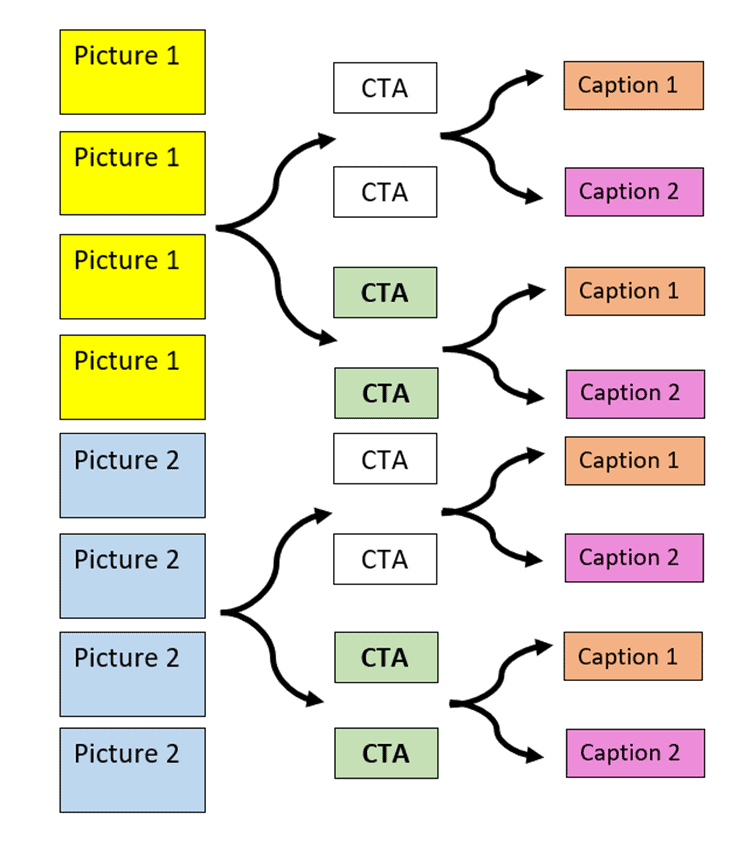“We’ve always run our social media this way, and it seems to work fine.”
“Our audience seems to like this style of caption.”
“We just post when it feels right, it doesn’t matter what time it is.”
“Social media should be fun – there’s no point trying to track it.”
Does any of this sound like you?
If so, social media testing might be the missing ingredient needed to take your social media strategy to the next level. It’s time to start seeing results.
When it comes to social media, it is easy to get caught up in the fun side of content creation. Many people grow complacent about their social media strategy; relying on their gut to make decisions, sticking to the same approach they’ve always used, and assuming that their audience prefers this style.
You cannot get by using intuition alone when approaching social media marketing – especially if you are marketing in a recession. You need the numbers to make data-driven decisions and back up your strategies with facts.
Think: when you’re looking at different types of phone systems, do you pick one at random and stick with it? No, you consider the different options. The same applies to every aspect of social media.
Your social media strategy should be one you choose after testing multiple approaches to see which was the most successful. It doesn’t happen by chance.

Free to use image sourced from Pixabay
So, what is social testing?
Social testing (aka social media testing) means experimenting with different aspects of your content, monitoring results, and optimizing your future posts accordingly. This removes the guess-work, leaving you with a results-oriented strategy.
This means that you can change different variables and see how they affect performance, how your audience reacts, and how this aligns with your brand’s goals. Rather than relying on hunches or anecdotal evidence, you’ll have more concrete proof of what works and what doesn’t.
Social testing requires patience, but watching patterns emerge can be uniquely exciting and rewarding. From here, you can create campaigns that you’re confident will work, and be able to devise a tailored social media plan going forward.
Before you get started
Before you get stuck into testing your campaign, get a few details clear in your head – and be sure to keep record of them as well. What exactly do you want to test? What are the overall goals for your business? How are the two related?
Make a hypothesis
Make a list of the hypotheses that you want to test. A hypothesis is an assumption – perhaps based on anecdotal evidence, or a vague feeling – which can form the starting point for social media testing.
Making this list of speculations will allow you to identify the most pressing issues for your company and decide what to focus on first. It’s okay to start small – in fact, it is encouraged. Testing everything at once will likely lead to confusing, inconclusive results.
With a hunch in mind, write up a more actionable hypothesis. For example: “I want to test which tone of voice in our facebook posts generates the most likes. My hypothesis is that posts with emojis will receive more likes than those without. This contributes to our larger business goal of increasing online visibility through interaction with customers on social media.
Think about metrics
How you measure your progress is up to you. Preferred metrics will vary from case to case, but here are three key standards of measurements to get you started:
- Impressions: how many people/accounts a post reaches.
- Engagements: how many people/accounts interact with your content. This could be by clicking, sharing, liking, or commenting.
- Traffic: how many new users a post drives to your website.

Screenshot taken by author, instagram insights showing impressions broken down by source
Success might look different for different businesses – and that’s okay! Set your own specific targets rather than working to meet endless arbitrary benchmarks set by others.
Whichever metric you’re choosing to track, it’s a good idea to have an understanding of your current performance in that area before you start making changes.
Set a duration
Before running a test, it’s good practice to know how long you plan to continue it for – don’t let it carry on indefinitely. Setting a fixed time frame means you won’t be wasting money or time.
Figure out your budget and experiment duration during the planning process. You might decide to gather results at the end of the week, or the end of the month.
Now you’re ready to decide which type of testing to execute.
Types of social testing
There are two main types of social media testing we’re covering today: A/B testing and multivariable testing.
A/B testing

Free to use image sourced from Pixabay
A/B testing is the most simple form of social testing – but it is a powerful tool and an essential part of any results-driven social media strategy.
In A/B testing, you only change one variable. Try to keep everything else the same.
For example, if you are testing which caption performs the best, do not change any other variables. Keep the photo, the link placement, and the time posted the same. Small deviations can muddy your results.
Of course, in the fast paced world of social media, it can be hard to stay on top of your control variables. This is why it’s important to keep it simple.
Factors to test with A/B Testing
- Content type: videos or photos? Blog posts or reels? Does your audience respond differently to the same information in a different format?
- Captions: long or shoot? Emojis or no emojis? Questions or statements?
- Images: generic or tailored? Realistic or cartoony? Graphs or photos? This color or that color?
- Time of day: Monday at 10am, or Monday at 9pm? Or, you could experiment with the same time on a different day of the week.
To see how A/B testing can help you get results, let’s look at an example.
- Say you have identified optimizing hashtags to improve visibility as one of your goals. You could pick hashtags at random and hope for the best. Or, you could use A/B testing to find the hashtags with the highest number of accounts.
- In this example, you might test two relevant hashtags on a TikTok video. Document which gets the most views. You’ll start to get a picture of what works for your content.
- But it doesn’t have to end there. Taking the winning hashtag, you can continue to pit it against another hashtag to see which performs better. Continue tweaking until you arrive on a combination of hashtags which yield the best results.
- Then, you could A/B test a second element. Perhaps experiment with different captions and keywords while keeping your optimized hashtags in place.
A/B testing is not just essential to your social media strategy, it is also applicable in other areas. Try A/B testing details of your landing page, your chatbots, and your IVRs (interactive voice response).
Multivariable testing
Multivariable testing (MVT) is a bit like A/B testing on a larger-scale. This time, as the name suggests, you’re altering multiple variables at once instead of one at a time.
Opt for multivariable testing when you want to test the impact of more radical changes, and want to see the results of two or more campaign elements at once. You’ll need a sufficiently large audience to pull this off, as testing more components makes the data more difficult to analyze.
To carry out MVT testing, modify multiple elements and test them against the original (control) version. This way you can determine which combination most affects the metric you’re tracking.
Let’s look at an example to make sense of MVT tracking.

Created by writer
In the flowchart above, three elements are being tweaked: the picture, the call to action (CTA) button, and the caption. There are two variations being tested for each, resulting in 8 possible combinations:
- Picture 1, CTA 1, Caption 1
- Picture 1, CTA 1, Caption 2
- Picture 1, CTA 2, Caption 1
- Picture 1, CTA 2, Caption 2
- Picture 2, CTA 1, Caption 1
- Picture 2, CTA 1, Caption 2
- Picture 2, CTA 2, Caption 1
- Picture 2, CTA 2, Caption 2
You can now test which of these 8 possibilities performs the best.
You could achieve similar results with multiple A/B tests, however a multivariate test will find your winning combo in the shortest amount of time.
When correctly optimized, multivariable testing is one of the most efficient ways to gain insight into your social media marketing strategy.
The possibilities are endless – there are many more elements you could change besides those in the previous example.
Factors to test with multivariable testing
- Copy: test different variations of headlines, SEO optimized keywords, body test, use of emojis and slang terms, and overall tone of voice.
- Call to Action buttons: test different CTAs, for example by changing the size, color, or placement of the button. You could also experiment with different featured images or words used.
- Ad formats: test various formats in your paid promotions – eg. carousel ads, single images, shorter or longer videos.
- Content types: experiment with instagram reels, tik tok videos, graphics, and gifs.
- Audience: test out the same content shown to different segments of your audience, or on different channels.
- Post scheduling: experiment with posting on different days of the week or times of day.
Both A/B and multivariable testing can be done manually, for example by keeping track of results in a spreadsheet. Thanks to the scope of automation testing, including the use of open source automation tools for software testing, they can also be done automatically.
Turning your data into a results-oriented social media plan
There is no point in social testing if you don’t then utilize the data. Utilized to its full potential, the information yielded by social media testing can transform your social media strategy.
At the end of the set time, take a look at the social media metrics you decided to measure. You should see some difference in performance between your test posts and the control.
Before you get too excited, there’s one more thing to keep in mind: statistical significance.
Statistical significance is an indicator of whether the findings of an experiment are significant enough to conclude that they were caused by the variable you changed. Smaller differences in data are more likely to be caused by random fluctuations or chance.
- Note: testing a large sample size and having a clear control helps to ensure statistical significance

Free to use image sourced from Pixabay
Your results might reveal a significant and obvious winner. Amazing! Did you have a hunch that your audience would respond better to a more casual tone of voice? Or felt more of the budget should be given to video production rather than image-based ads? Now you have the proof to back it up.
On the other hand, you might find no significant relationship between changing an element and gaining more traction on social media. Either way, it is important to analyze and communicate your results thoroughly.
Whatever conclusions you can draw from the data, be sure to make note of them and keep them for your records. This is especially essential if you’re working with a team – make sure that everyone can access and benefit from these insights going forward.
In this digital heavy age, leveraging tools like cloud data sharing can facilitate the handling and sharing of large quantities of data, enabling collaborative efforts and maximizing the benefits of social media testing.
Final thoughts on social testing
In conclusion, it is essential to recognize the limitations of intuition and anecdotal evidence when it comes to social media marketing. Complacency can hinder growth and progress.
Embracing data-driven decision making leads to more targeted strategies and more effective audience engagement – lending your company a competitive edge in the ever-changing social media landscape. After all, the more you know about your customers behavior, the easier it is to structure your social media plans accordingly.
Both A/B testing and multivariable testing empower businesses to experiment with various elements of their content, monitor performance metrics, and find out what works.
Remember to develop relevant hypotheses, set clear goals, and determine the metrics that align with your business goals. Whether it’s measuring impressions, engagements,or website traffic, you’re sure to uncover patterns when you delve into the data.

